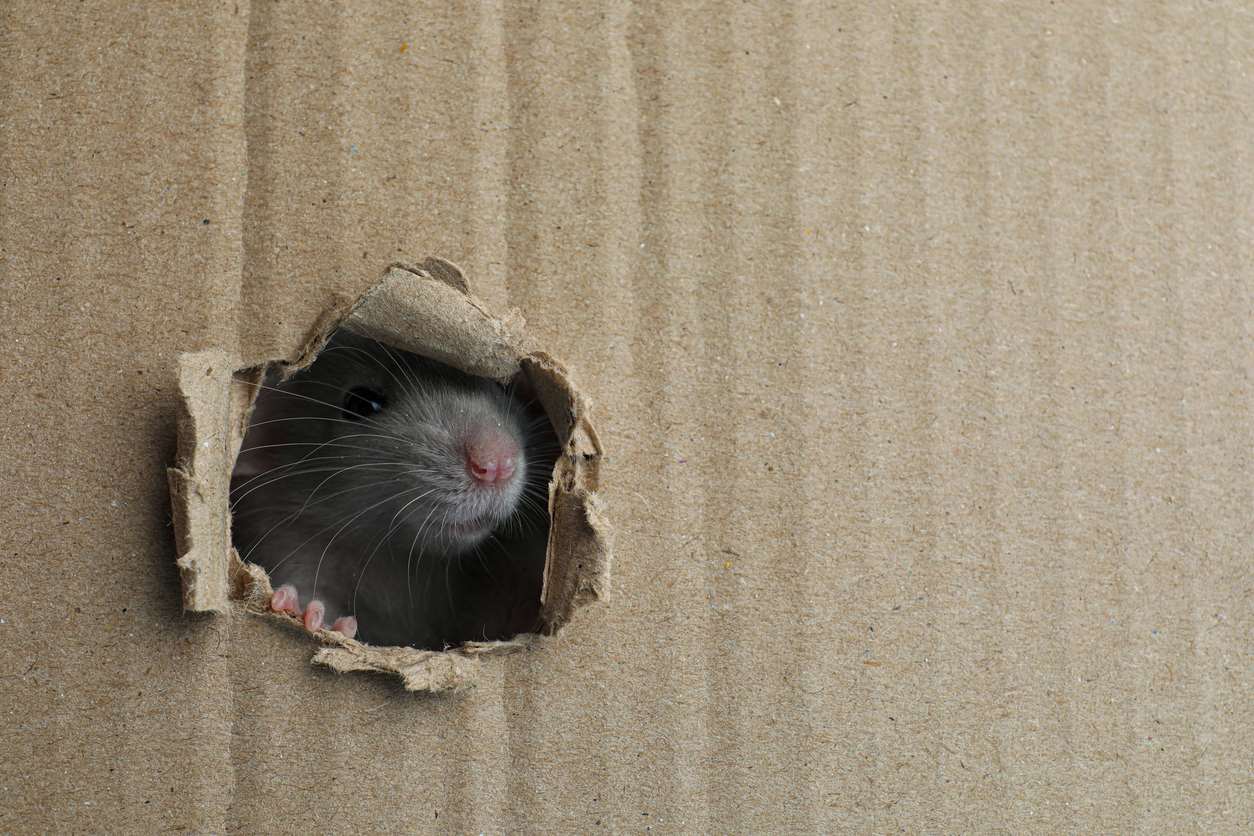As cooler fall temperatures set in, it’s not uncommon for mice to seek shelter from the cold in your cozy house. That’s why you need to keep an eye out for signs of mice infestation to stop these furry invaders in their tracks.
If you’re not sure how to identify a mouse infestation or you need a refresher, allow our team at Dewey Pest and Termite Control to provide helpful insights for your peace of mind. Read on to learn about common signs of mice in your house.
1. Mouse Sightings
The most telltale sign of a rodent infestation is spotting a mouse out in the open around your home. If you’re not sure if you’ve discovered a mouse or a rat, there are several physical differences between these species. Mice measure about 7.5 inches long, with thin tails lightly covered in hair and large ears. They also have gray or brown fur.
Rats, on the other hand, have smaller ears and larger bodies measuring up to 18 inches long, with thick, scaly tails and long feet. Rats’ fur color can range from brown or gray to black. If you’ve spotted a rodent in your home but can’t confirm its exact species, contact a rodent control professional near you.
2. Mouse Droppings
Another common sign of a mouse infestation is the persistent presence of droppings. Mouse droppings look like tiny, rod-shaped black pellets comparable to grains of rice. Homeowners often notice these droppings near pantries, ovens, or along the baseboards of their kitchen walls.
3. Gnaw Marks From Mice
Mice have ever-growing teeth that they grind down by gnawing on a variety of hard materials. When they take a break from feeding on your stored food, mice often chew on spots around your home to wear down their teeth. Common areas to check for gnaw marks from mice include:
- Furniture
- Wooden structures
- Electrical wiring
- Plastic plumbing
- Cardboard
4. Tracks and Runways
As mice scurry across your home, they often leave behind their tracks and runways. A runway is a route mice establish between their nest and food source. Some typical spots for rodents to leave their prints behind are along walls or near your home’s foundation. Mice have oily fur and can leave grease stains along the walls they touch as part of their pathways.
If you suspect you’ve found a mouse pathway, sprinkle flour along the area before bed and check it for paw prints the next day. Keep any pets away from the flour so they don’t tamper with your test.
5. Foul Odors
Mice may be able to stay out of sight, but they can’t hide their smell. This stench is often the result of not only their droppings but also the urine spots they leave behind. Homeowners often notice these odors near areas of heavy mouse activity such as nesting areas and the food sources they feed on.
6. Holes in Your Walls
Mice often use their sturdy teeth to chew gaps or holes through the walls of your home to escape the chill of winter. These flexible rodents can even fit through holes as small as dimes, which makes investigating and sealing any cracks or gaps around your home vital.
7. Torn or Shredded Materials Being Used for Nests
Once they’ve found a suitable spot to shelter in your home, mice will shred paper, string, and other materials to form their nests. Mice prefer to nest indoors in dark, secluded areas where they can birth and raise their young without being disturbed. These spots include inside cabinets, drawers, wall interiors, or even your attic. If you notice newspapers or magazines around your home with torn covers or pages, it’s possible mice are using them for their nests.
8. Scratching Noises at Night
If you notice strange scratching noises in your walls or ceiling before bedtime or in the middle of the night, don’t ignore them—you may be hearing mice. Frequent scratching noises are one of the most common mouse infestation signs. These nocturnal rodents crawl, scratch, and gnaw freely during the night inside your walls and ceiling, assuming you’re fast asleep and unaware.
9. Unusual Pet Behavior
It’s not just humans who can detect a problem with pesky unwanted critters. Your cat or dog will behave strangely if they also detect a mouse around your home. Pets who have found mice or signs of mice will bark or meow in certain areas, scratch and paw at walls, or refuse to move away from your pantry or cabinets.
Even though some pets, such as cats, are natural rodent predators, mice also pose a health risk to your furry friend. These pests can transmit diseases and parasites to pets, potentially causing serious symptoms like vomiting, diarrhea, and dramatic weight loss.
How Do I Identify a Mouse Infestation in My Home?
You may be tempted to take matters into your own hands by identifying signs of a mouse infestation yourself. However, even though you can confirm that you have a rodent in your home, it’s best to leave the dirty work to a professional pest control service.
The best mouse control technicians will get down to the root cause of your rodent problem and apply preventive and specialized treatments to help you regain your peace of mind.
Get Your Rodent Control Solution With Dewey Pest and Termite Control
Do you have a problem with mice or other rodents? Turn to Dewey Pest and Termite Control for the best rodent control services in California. Our team of technicians has used preventive and environmentally friendly treatments for over 95 years to solve mouse issues for our friends and neighbors.
Get a head start and request our rodent control services today by finding your nearest service branch office or contacting our team online!



